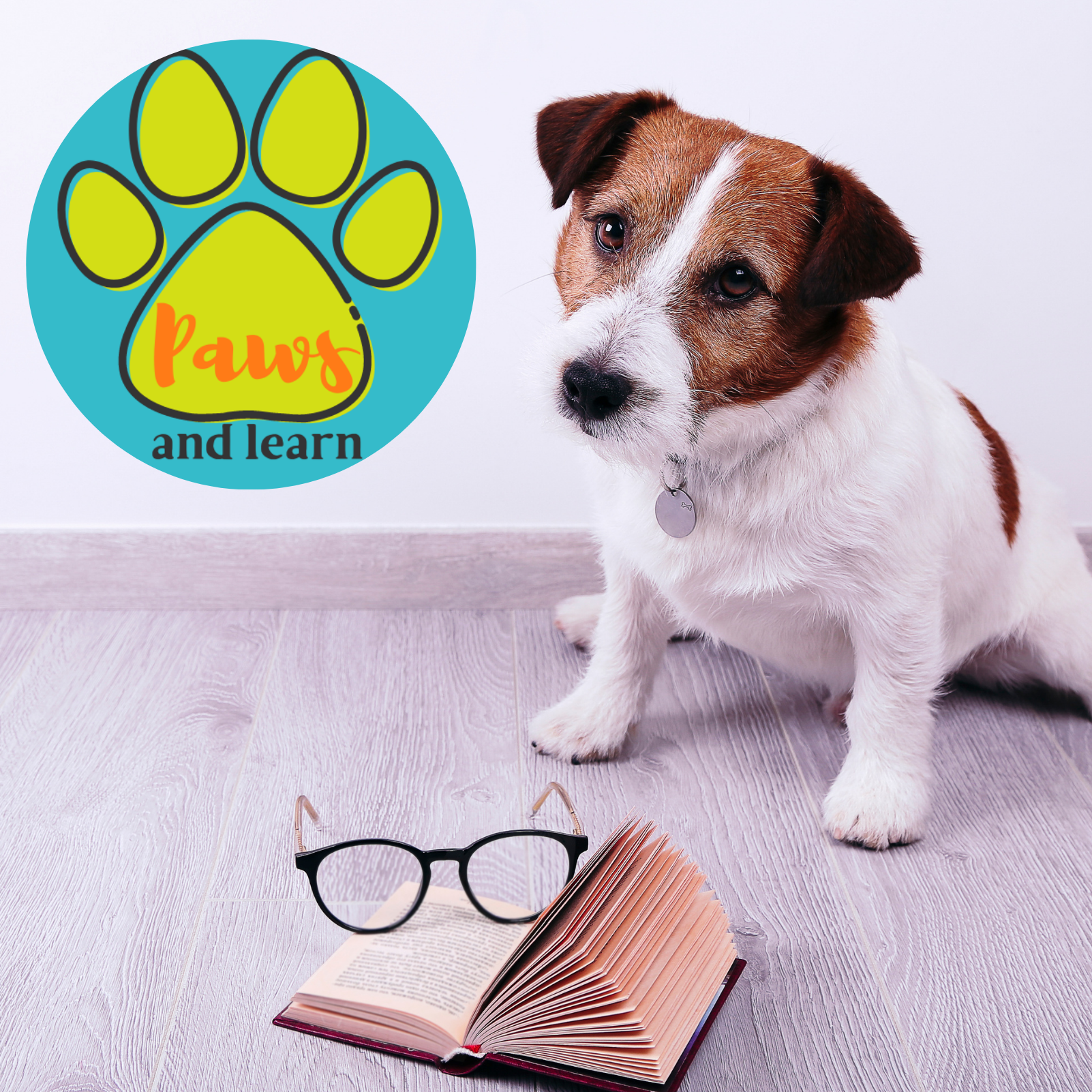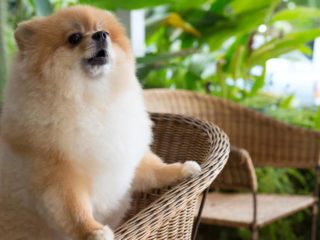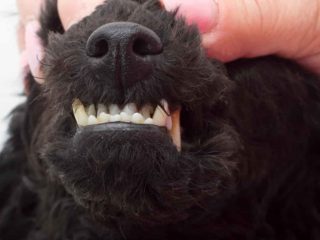From their fluffy faces to their fluffy behinds it’s hard to pick just one feature about the Pomeranian that I like the most, but if I had to, their beautiful tails might just be it! With the massive amount of fluff and fur on its tail, it’s fun to watch how expressive they can be when wagging it.
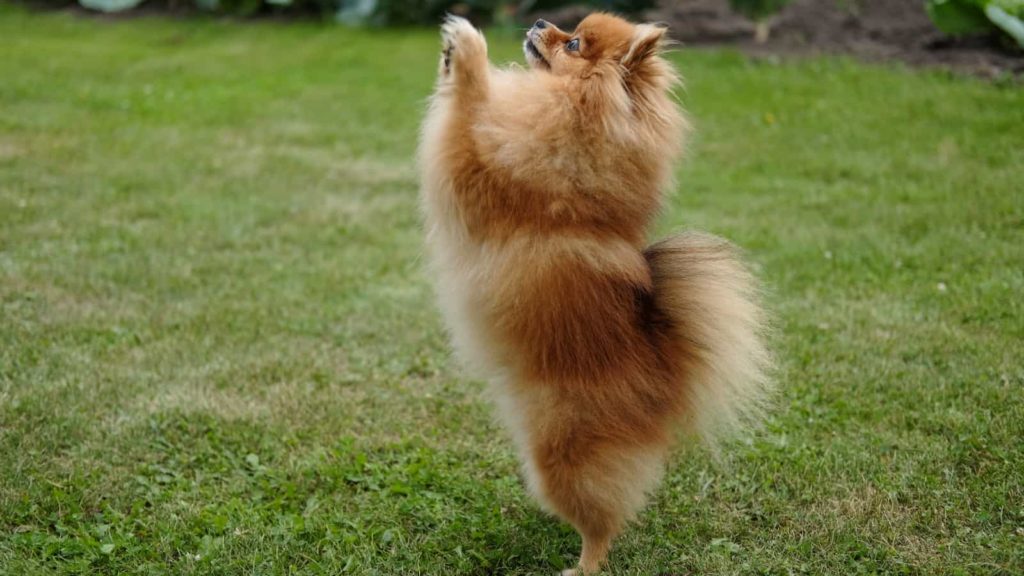
What Does A Pomeranian Tail Look Like?
A Pomeranian’s tail has a very distinct look. It is heavily plumed, set high and lies with an arch or sickle curl on the back. Their tail fur fans out across their back and is made up of the same thick double coat that covers the rest of the Poms body.
The fur on a Pomeranian’s tail is my favorite part. It’s so big and fluffy that sometimes their tails blend right in with the rest of the then and it’s hard to tell if they even have one at all!
Pomeranians are officially members of the toy group but they also have Spitz heritage which is akin to many northern snow breeds. Their close relatives include Chow Chows, Huskies, Malamutes, Akitas, Norwegian Elkhounds, and others.
As a dog who originally comes from cold temperature climates, it needs extra protection against the elements. Genetics and selective breeding have done their job over many generations giving Pomeranians that distinct thick fur in their tail that will be advantageous for their own protection.
A dog’s tail is an extension of its spine and has bone and cartilage in it just as its spine does. For a dog with a straight or slightly curved tail like a Dachshund, the tail bone goes straight out with little deviation.
Do Pomeranians get their tails docked?
Tail Docking or bobbing is the removal of portions of a dog’s tail. Historically tail docking was done to prevent injury for working dogs.
Disclaimer: This post may contain affiliate links. We only recommend high-quality products that are used and recommended by real owners. If you use these links to buy something we earn a small commission.
Pomeranians are not a breed that traditionally gets their tails docked. A Pomeranian’s tail is left to grow naturally and long unless there is a medical reason to have it docked.
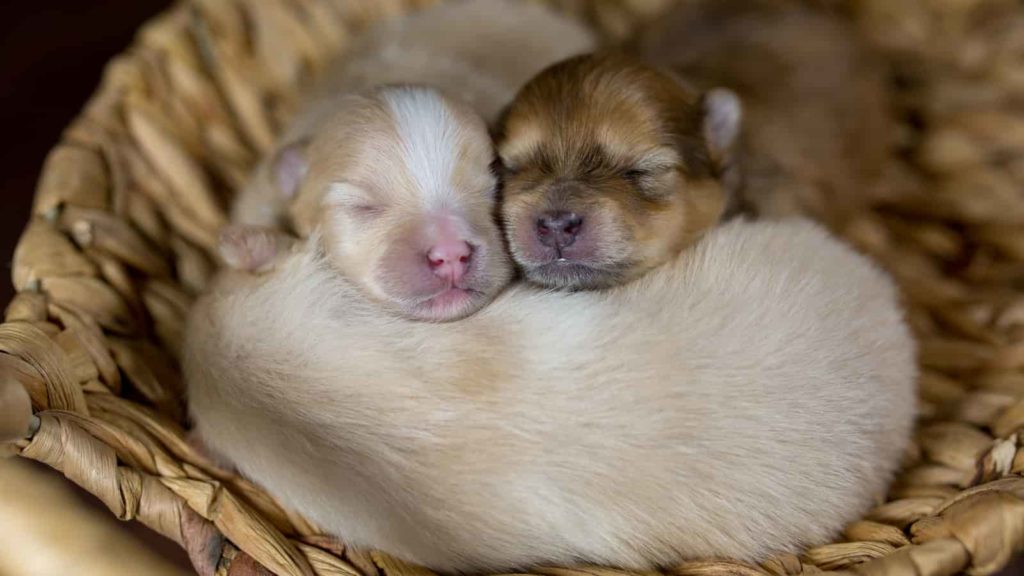
Some PomPoos (Poodle Pomeranian mix) breeders will dock the puppies’ tails if they are following the AKC breed standard for the poodle. There is no reason they should get their tails docked and most owners prefer that they do not have docked tails.
PomPoos are a mix between a Poodle and a Pomeranian they are bred to be companion lap dogs. Traditionally the standard was to dock tails of working breed dogs to protect them from injuring their tails in the line of work.
Tails are such an important part of how these sweet little dogs communicate with us there is no reason they should ever get their tails docked.
Do Pomeranians have curled tails?
Most Pomeranians have a distinct arch or sickle shape to their tail, but do not have very curly tails. Some Pomeranians may have a curly almost pig-like tail. A curly tail like this most likely means that the dog is not purebred, or they have a genetic deformity.
There are some Pomeranian owners who have dogs with curly tails and they are purebred Pomeranians.
Genetics of the mother and father play a big role in how your Shih Tzu’s tail will look.
There is a slightly higher chance that if your dog has a very curly tail that it could be mixed with another breed.
Some breeds that have curly tails that may be mixed with your Pomeranian could be a Pug, or a Chow Chow.
Some Pomeranian owners have noticed that their dog’s tail curls more than normal and almost looks like a pig’s curly tail. If this is the case for your dog don’t panic, it shouldn’t cause any problems, but you may want to check with your vet at their next appointment to be sure.
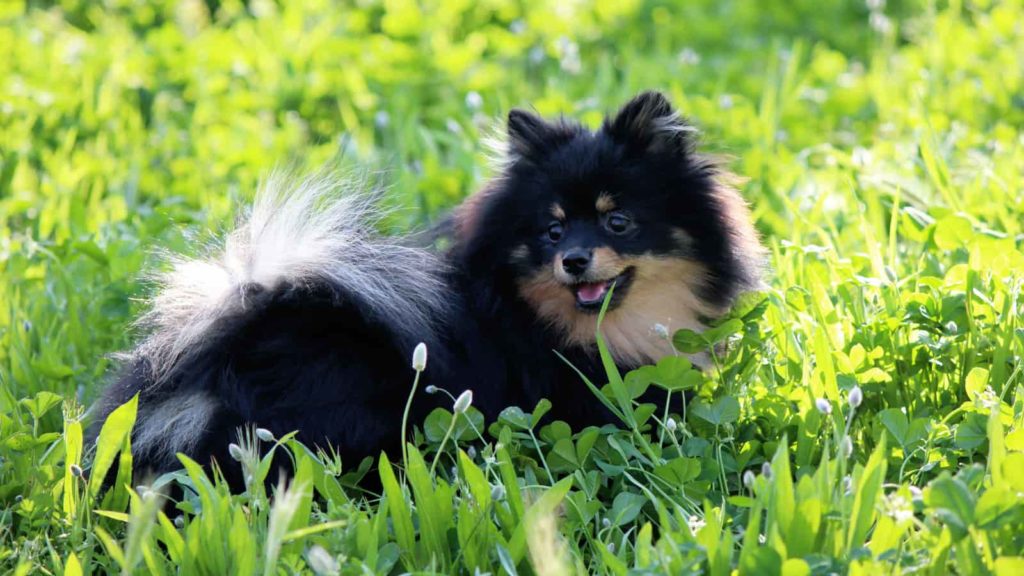
As a Pomeranian’s tail is an extension of their spine the posture of your Pom’s tail can give you some clues into your dog’s spine health.
If you notice that your dog is sitting with its back end slightly sideways and the tail looks to be off to one side it could mean that their spine is out of alignment and it would be best to get him an adjustment.
It would also be recommended that you don’t breed your Pomeranian as this flaw can be passed down to the puppies and become more problematic for each generation going forward.
The one issue some owners have with their Pom’s curly tail is that it can make grooming more difficult. Having a curly tail can cause more matting at the base of the tail.
Pomeranian Tail Position Wagging and Communication
Do you ever wonder what your Pomeranian’s tail wagging means? They wag their tails for many different reasons. It’s a big part of how they communicate with you.
Wagging their tail doesn’t always mean they are happy. They could be conveying other emotions like nervousness or fear as well.
The key to understanding the meaning behind their tail wagging is to put it together with all the other contextual clues they are giving you. What are their ears doing, their eyes, how is their posture? Noticing these things as well will help you know why your Pomeranian is wagging their tail.
Here are some things your dog could be communicating to you with its tail.
- Calm and chill – Tail in the natural curled and resting position. Sleeping or resting or casually walking around.
- Greeting or I love you – Usually, a big carefree wag, accompanied by eye contact, coming to you and jumping on you or trying to get your attention.
- Curious or unsure – Backwards and gentle wagging. Maybe sniffing around a little, intense and curious staring. Looking to you for reassurance.
- I’m nervous or scared – The tail between their legs and possibly slightly moving. Body tense, eyes down, ears laid back. Could also be trying to communicate a submissive position.
- Aggression – Tail high in the air and rigid. Poised, rigid, and making eye contact. Could be barking or growling as well.
- Playful and Happy – Fast care-free wagging. Wiggling body, happy facial expressions. Body not tense, possibly going in circles around the object causing excitement such as a treat or toy.
There’s also been a study done that shows the direction that your dog wags their tail can show positive or negative emotion.
Fun Fact: Wagging their tail towards the right side of their body can indicate more positive emotions such as relaxed, and happiness. Wagging their tails on the left side of their body is a sign of more negative emotions such as nervousness or fear.
Some dogs are bigger tail-waggers than others. If your dog doesn’t wag its tail a lot it’s most likely nothing to be worried about. You will just need to work on identifying other body language cues to help you understand what they are trying to tell you.
If your Pomeranian has suddenly stopped wagging its tail then that could be a cause for concern. You will want to think about the entire picture of what may be happening before jumping to any conclusions about the cause.
If your dog’s environment has drastically changed like moving somewhere new, or there has been a big shift in your household dynamics like a new spouse or housemate then it may just take some time for your Pomeranian to feel up to using that furry tail again.
It’s possible it could be something a little more concerning which is what we are going to discuss next.
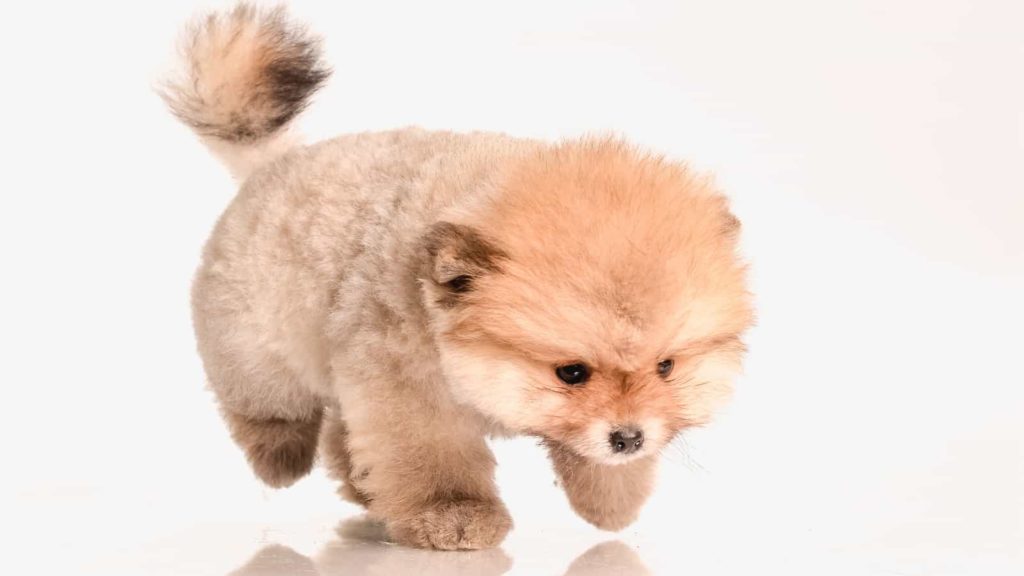
Pomeranian Tail Problems
Nothing can be more concerning than when your furry companion has a problem. Tails problems can be truly troubling since it’s such a big part of how our dogs communicate with us.
If there is ever a major concern about your dog’s tail it is always recommended that you reach out to their vet to seek professional medical advice and help.
However, as a dog owner myself, I know that learning everything we can about the possibilities of what it could be while waiting for a call back from the vet can help to put my mind at ease.
Here is a list of the possible problems you might come across with your Pomeranian’s tail.
Limber or Swimmer’s Tail in a Pomeranian
If you notice your Pomeranian’s tail hanging down and it looks limp and unnatural then he may have a condition known as Limber Tail.
Limber tail Also known as swimmer’s tail, frozen tail, dead tail, broken wag, or cold tail is a condition that causes your dog to hold his tail limp and down instead of the usual upright position. Its official name is Acute Caudal Myopathy.
It is most likely to happen after your dog has had a very active or strenuous play, exercise, or excessive tail wagging. Sometimes a lot of swimming can cause it, being in cold wet weather, if they are confined to their crate too long, or if your dog’s tail is wagging and getting whacked on various surfaces.
This condition may cause your dog pain and swelling in their tail, make it difficult to sit. Usually, it will go away on its own after a few days of rest.
Most Pomeranian owners report that the tail goes back to normal with rest after a few days to a week.
It’s important to try and limit exercise and movement if you notice that your dog is experiencing this problem. If it is causing your dog a lot of pain then consulting your vet is a good idea.
Usually, this isn’t a chronic problem, but it is a good idea to figure out what may have triggered it in the first place and try to avoid that activity if possible. Coldwater play, or being confined in a crate too long are often things that could trigger this condition.
Swollen or Full Anal Glands
If you notice your Pomeranian chasing its tail a lot more than usual or scooting its bum across the carpet it could be that its anal glands are blocked and swollen.
This is sometimes the cause of your dog’s hanging tail as well. Making sure that your dog is eating a clean healthy diet like fresh food from Ollie (Get 50% off here) can help to avoid this, but sometimes it’s as simple as our dog’s anal glands needing to be expressed. You can have your vet do it, or learn to do it yourself.
For more information on this, you can read this article on Wag Walking.
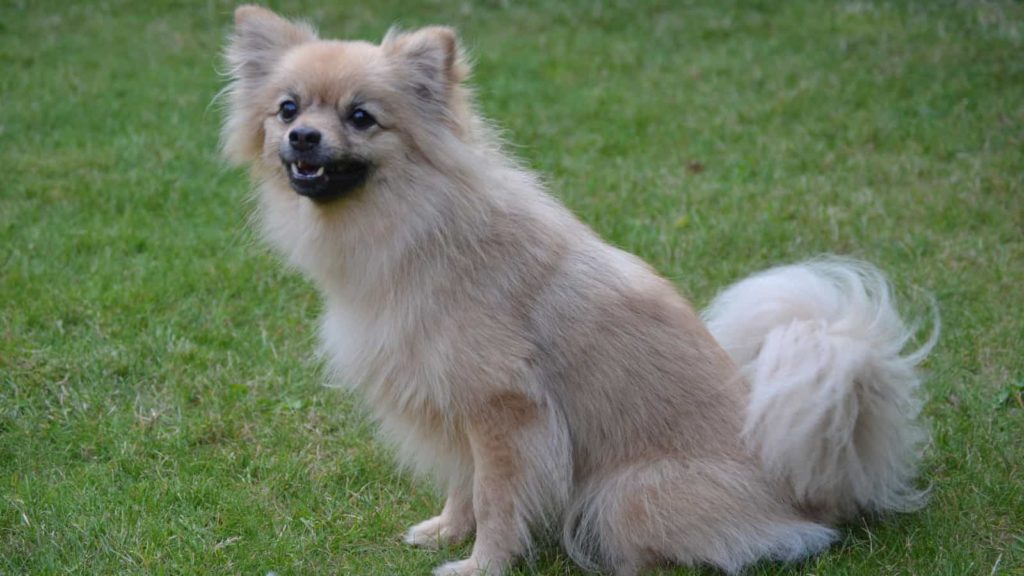
Pomeranian Tail Losing its Curl
Another form of Limber tail that tends to happen as Pomeranians age is a slow steady drooping of the tail over time. If your Pomeranian’s tail is slowly starting to droop or lose its curl it could be a joint issue, arthritis, or a sign of another ailment brought on by old age.
Some owners I talked with said that this happened with their dogs around age 9-13. Even if your dog is not whining or displaying any obvious signs of pain they may still be feeling a lot of discomfort from the issue.
Talk to your vet about medication or tests that would help your Pomeranian remain comfortable.
Hair Loss on a Pomeranian Tail
There are several reasons that your Pomeranian may be losing hair on its tail. We will discuss a few, but it’s important that you consult your dog’s vet to get a professional medical opinion.
If your Pom is obsessively licking or chewing their tail, read this article.
- Atopy – Environmental or food allergies that cause hair loss on the tail and other parts of your dog. Could be seasonal. You may want to treat it with antihistamines prescribed by your vet.
- Mange– a parasitic skin disease caused by microscopic mites. Look for patches of fur missing and a lot of itching. Many cases will clear up on their own, more severe cases should be treated by a vet.
- Fleas – Very tiny wingless insects that will bite and feed off of your dog. Look for small red bumps on your pet’s skin. Fleas may irritate your dog enough that he will be biting or scratching so much his fur starts to come off.
- Hormonal Problems – Cushing’s disease or hypothyroidism can cause hormonal imbalances that may cause hair to fall out. If your dog is not biting or scratching its tail but they are still losing hair this may be the cause. Watch for a tired or lethargic dog. This can be treated with medication or surgery. Consult your vet.
- Old age– If your Pomeranian is a senior (9-12 years old) hair loss on its tail may be caused by aging. If this is the case you can do your best to help them feel comfortable and make sure that they are not in any pain.
Not only is taking care of your Pom’s tail important, but it is also important to take care of their teeth. You can read this article to get the best tips for keeping your Pom’s teeth healthy! Pomeranian Teeth Complete Guide (Cleaning, Problems, and More)
Pomeranian Chasing its Tail or Chewing and Biting its Tail
For the most part, if your Pomeranian is chasing its tail it’s most likely just a harmless and adorable game. Puppies tend to do this a lot because they are so playful and exploring more about their world and discovering their fun long tails. If your dog is chasing his tail it might be because he’s bored or it’s just a fun game for him.
The problem comes when your dog is obsessively chasing its tail and it seems like they are in pain stressed or biting its tail and causing things like bleeding, or hair loss.
If this is the case then rightfully you are probably concerned.
The cause for this could be one of several things. Here are the things that you can look for.
- Impacted anal glands
- Parasites like fleas or ticks in the tail
- Injury or sharp pain somewhere on the tail
- Allergies or itchy skin
You will need to address the root cause of the issue in order to get your pom to stop chasing its tail. Your vet can help you determine what the root cause may be.
Pro Tip: If you are not able to get a hold of a vet near you, or you want to avoid an unnecessary ER trip, there are online resources that you can turn to. Here is our best recommendation:
Pawp: a 24/7 digital clinic for pets that connects you to an experienced vet
Why we love it:
🐾 Answers 24/7! 🐾 No waiting! 🐾 Get Answers Online with Local Vets! 🐾 Quick Response Time! 🐾 Easy Sign UP!
Try Pawp 7 Days For Free
Pomeranian Tail Grooming
Grooming your Pomeranian’s tail will be similar to grooming the rest of them. The most important thing is to keep it free from mats and dirt. You can do this by making sure to brush it regularly. Using a de-shedding brush like this one from Amazon can help to keep your Pom’s tail looking nice.
Most owners like to leave their Pom’s tail looking long and natural, but some may prefer to give their Pom’s tail a lion cut.
The most popular trim for your poms tail is just a quick fan trim. You can see the steps in doing that in the following video.
Whichever way you decide please NEVER shave your Pomeranian.
Read this article I wrote to learn why shaving your Pomeranian could cause permanent damage.
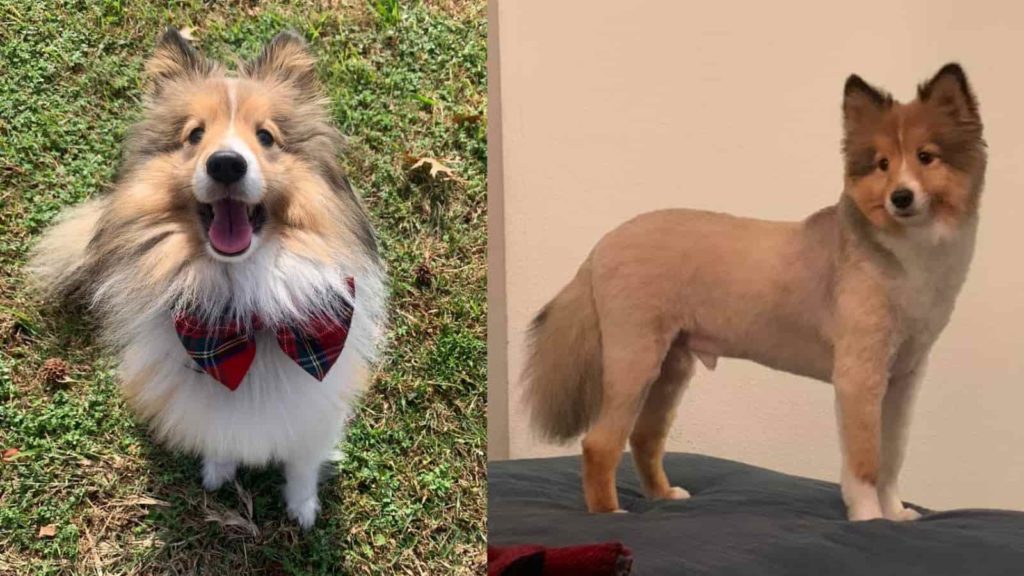
In Summary
Taking care of our dog’s most stunning features like our Pomeranian’s adorable curly tails may take a little extra work and know-how, but isn’t it worth it?
